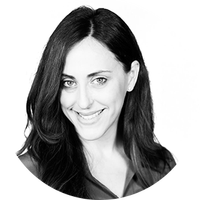How the Kardashians' neighborhood became the most notorious suburb in America
Why did sleepy Calabasas become reality TV's Hollywood?


In their latest issue, V Magazine profiles Kylie Jenner, who is transitioning from the supporting role she long played in the lives of her more famous, Kardashian-surnamed sisters into a true reality star of her own. In it, they claim that Kylie "might be more Calabasian than any of her sisters, having spent most of her lucid life in syndication."
As New York's Véronique Hyland pointed out, this is "the first recorded instance of the term" Calabasian, which means, according to them "of, or residing in, Calabasas." While not technically true, as a quick Google search will prove, "Calabasian" is still a sign of the growing hold my hometown has on our cultural imagination.
So who are Calabasians? What's it like there? And why do celebrities, like Jennifer Lopez, Justin Bieber, and, just this month, Katie Holmes keep moving there? And why do others, like Jessica Simpson, Denise Richards, and the Kardashians, decide to locate their reality shows in this mountainy suburb on the edge of the San Fernando Valley?
The Week
Escape your echo chamber. Get the facts behind the news, plus analysis from multiple perspectives.

Sign up for The Week's Free Newsletters
From our morning news briefing to a weekly Good News Newsletter, get the best of The Week delivered directly to your inbox.
From our morning news briefing to a weekly Good News Newsletter, get the best of The Week delivered directly to your inbox.
As a Calabasas native, I think I've got an explanation.
I'll start with the big reveal. Underneath the McMansions, the Lululemon moms, the Tommy Bahama dads, and a strip mall that hosts rocks that sing and the largest Rolex clock in the world, Calabasas is really just a normal suburb. Go there and you'll see families grocery shopping, kids rushing off to soccer practice, parents having date night at the local cineplex, teenagers driving around looking for somewhere to smoke, and everyone complaining about the mediocre restaurants. In short, your run-of-the-mill bourgeois experience. And like every bookish teenager raised in such a place, I hated it.
Calabasas has become a name-brand suburb, but it is still a suburb. I like to think of it as the geographical equivalent of U.S. Weekly's "Stars, They're Just Like Us," column, a luxurious version of an otherwise predictable — some might call it banal — lifestyle. You can see Kim Kardashian filling up her Range Rover at the gas station. Or Drake grabbing some lunch at Marmalade. Even Justin Bieber's crime here (egging his neighbor's house) is the most Leave It to Beaver of his young career.
While it's hard to feel sorry for the rich and famous, there is no question that the age of tabloids has made it harder for stars to go about their daily routines without a photographer getting in their way. No wonder then that many are seeking out somewhere a bit more ordinary, and likely more similar to the types of places they were raised. I imagine that they see Calabasas as a refuge, a safe and quiet place to raise their families that also happens to host a number of $4 million mansions.
A free daily email with the biggest news stories of the day – and the best features from TheWeek.com
This "normal" value also works well in reality TV. It allows viewers to simultaneously relate and covet, to see their own lives reflected in the shinier versions on screen. This is something the Kardashians get — whether strategically or intuitively, I can't say — and it has, in my opinion, served as the key ingredient of their long-running success.
There was a time when Calabasas wasn't quite as gilded, when our small city had no clock towers, let alone one outfitted by Rolex and our most-lauded cultural offering was a store called "Yogurt & Video" where you could, yes, both get a frozen yogurt and a VHS tape to watch later that night. (The thought of it still induces pangs of nostalgia.)
But here's the thing: Even with all the fancy cars, the high-end boutiques, and the cameras capturing the Kardashian family's every move, Calabasas is still no Hollywood, or even a Beverly Hills. There are no exclusive spots — be they restaurants, nightclubs, or country clubs — and the majority of kids go to public school, albeit a local district that regularly outperforms Los Angeles Unified. Yes, the town center has expanded from one strip mall to two, but the main attraction is still getting some frozen yogurt and watching a movie. This, to many, appears to be its appeal.
Elissa Strauss writes about the intersection of gender and culture for TheWeek.com. She also writes regularly for Elle.com and the Jewish Daily Forward, where she is a weekly columnist.

